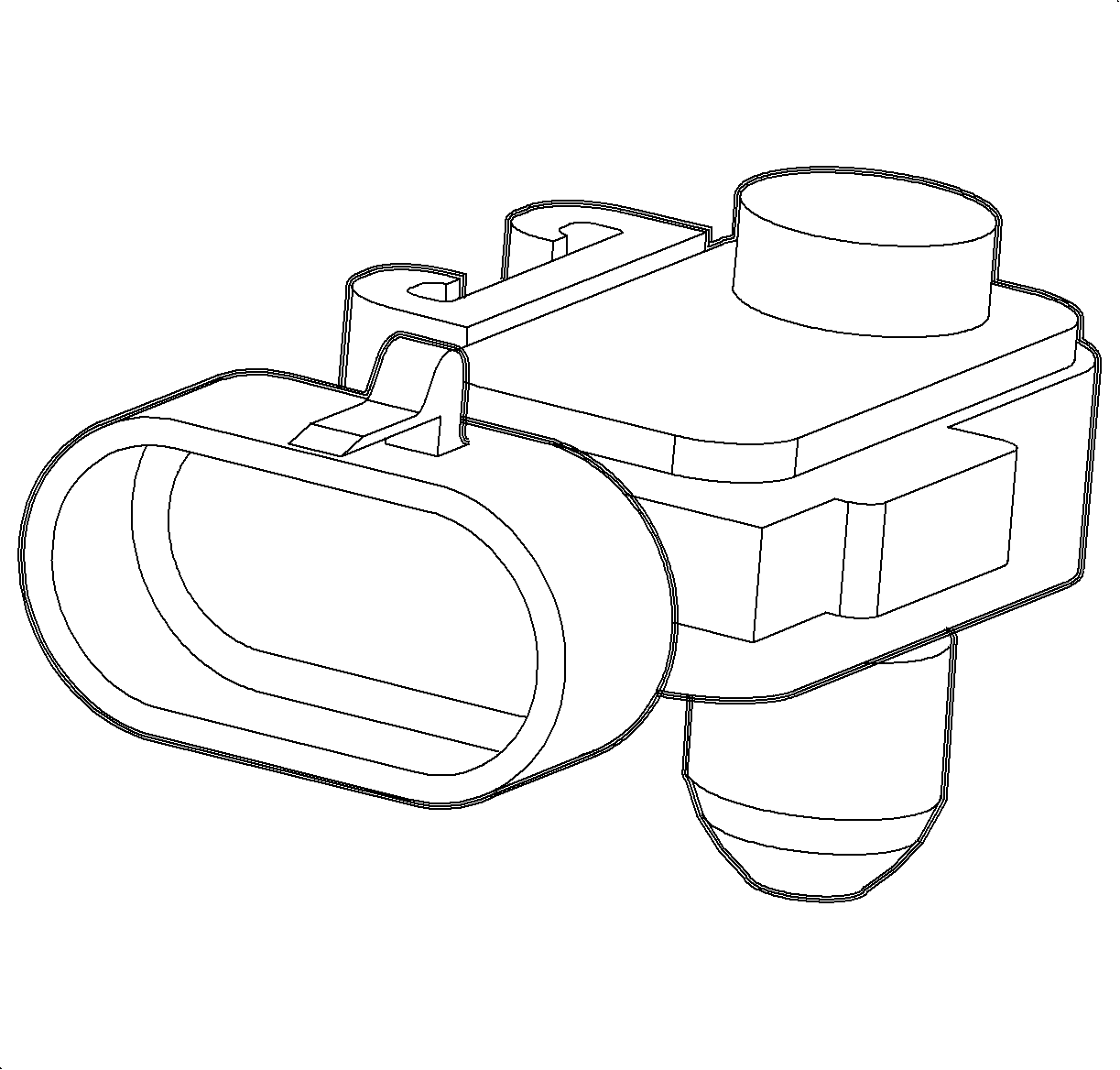
Fuel evaporation is a normal process in any fuel system. The purpose of the evaporative (EVAP) emission system is to limit the amount of fuel vapors, hydrocarbons, escaping into the atmosphere. To accomplish this, the EVAP system transfers the fuel vapors that accumulate in the fuel tank into an activated carbon storage container, the EVAP canister. The EVAP canister will store these vapors until the PCM determines that the engine is able to burn this stored fuel vapor. When the PCM determines that the engine is able to use this stored fuel vapor, it, along with fresh air, is drawn, purged, into the intake air flow, by opening the purge solenoid, and consumed in the normal combustion process.
The components that make up the enhanced evaporative emission system consist of the following:
- EVAP canister vent solenoid, located on the upper end of the fuel filler pipe just behind the left rear wheelhouse liner
- Fuel tank
- Evaporative emission system canister, nested on the top of the fuel tank at the left, rear corner
- Fuel tank pressure sensor, inserted on the top of the right, rear portion of the fuel tank
- System fuel lines and hoses
- Evaporative system service diagnostic port, located in the canister purge line, under the driver's side floorpan behind the left front wheel
- Canister purge solenoid, mounted below the intake manifold on the side of the cylinder block, toward the rear of the block
- Fill limit vent valve (FLVV), located on top of the tank, between the canister and the pump module
Important: This component is not part of the enhanced EVAP, but is part of the ORVR. Refer to Theory of Operation - Fuel Filling and ORVR.
EVAP Canister Vent Solenoid

The vent solenoid is part of the fresh air vent hose and pipe assembly routed to the vent port on the EVAP canister. This solenoid allows fresh air to enter the canister during purge modes. It is the vent to atmospheric pressure that allows fuel vapors generated in the tank to be routed and stored in the EVAP canister. It is used during diagnostics to close the system and allow vacuum, negative pressure, to be applied to the fuel tank as a system integrity check. The vent solenoid is a normally open valve.
Fuel Tank
The fuel tank is a blow-molded, high-density polyethylene container. This material is multi-layer in construction to enhance its ability to minimize leakage of fuel vapors to the atmosphere, impermeability. It is generally 4-5 mm (0.158-0.197 in) in thickness. The tank includes space for vapor and expansion of the fuel with temperature changes.
EVAP System Canister

The EVAP system canister is filled with activated carbon pellets that store the fuel vapors from the fuel tank. Engine vacuum purges this stored fuel vapor from the canister under normal driving conditions:
Each canister uses 3 ports. These include:
| • | Purge port -- The purge port (1) is connected to the engine manifold vacuum through the purge solenoid which is controlled by the PCM. Through this connection, the stored fuel vapors are drawn into the engine. |
| • | Tank port -- The tank port (2) allows fuel vapors to enter the canister as they escape from the fuel in the tank. |
| • | Vent port -- The vent port (3) allows air to enter or exit the canister. |
Fuel Tank Pressure Sensor

The fuel tank pressure sensor is a 3-wire strain gage sensor very similar to the engine MAP sensor. It is designed and calibrated to monitor a much smaller range of pressures, -15 to +5 inches of H2O, in the fuel tank. The sensor is referenced to outside air pressure and compares fuel tank pressure to that reference.
EVAP System Service Port

This service port provides a means to pressurize the EVAP system and check it for leaks via the J 41413 EVAP pressure and purge station. The service port is identified by a green colored cap and contains a Schrader valve. Under most circumstances, all system pressure testing will be done utilizing engine vacuum as a pressure source and performing the test via the scan tool. Refer to Powertrain Controls -- Enhanced EVAP Testing.
Purge Solenoid

The purge solenoid controls the engine manifold vacuum source that draws fuel vapor from the EVAP canister into the engine. Operation of the purge solenoid is controlled by the PCM and is pulse-width modulated to provide the desired flow rate. The purge solenoid is also operated during system diagnostic tests to verify the integrity of the entire, enhanced EVAP system. The purge solenoid is a normally closed valve.
